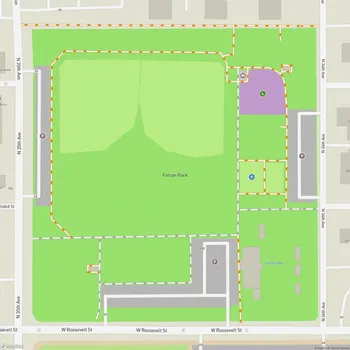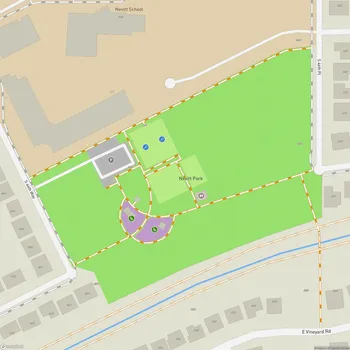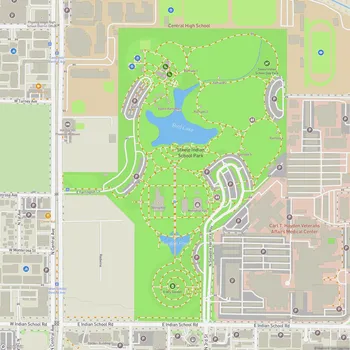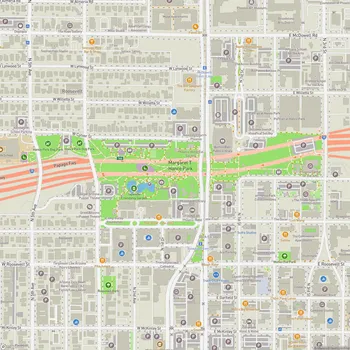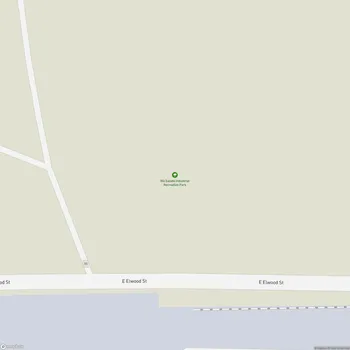Papago Park
Interactive Park Map
About Papago Park
Geological Wonders
Walk through Papago Park and you're literally stepping on history that dates back 6-15 million years. The Hole-in-the-Rock is a natural geologic formation where openings have been slowly carved by erosion over millennia. We find it fascinating that the ancient Hohokam people might have used these formations as a celestial calendar to track solstices.
The striking red sandstone buttes create a dramatic landscape. If you're into photography, consider visiting during the golden hours - sunrise and sunset when the light transforms these rocks. Hiking up to Hole-in-the-Rock offers views of Phoenix, Camelback Mountain, and the surrounding desert.
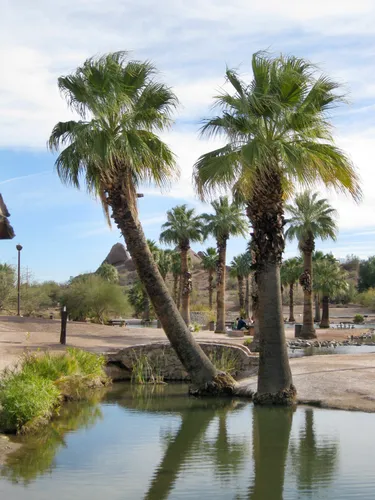
Rich Historical Background
This park has worn many hats over the years. It started life as an Indian reservation back in 1879 before being designated a national monument in 1914.
During World War II, the park took on an unexpected role as a German prisoner-of-war camp. By 1959, ownership officially transferred to the city of Phoenix.
One of the more unusual features you'll come across here is Hunt's Tomb - a white pyramid that represents the final resting place for Arizona's first governor, George W.P. Hunt. It's not something you expect to see in the middle of the Arizona desert, which makes it all the more intriguing.
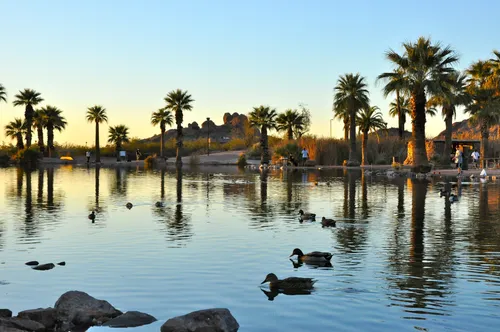
Trails for All Levels
Regardless of whether you're a casual walker or dedicated trail runner, there's something for you here. Most trails feature relatively smooth terrain with minimal elevation changes, making them accessible for a variety of activities.
The Double Butte Loop stretches 2.3 miles through the heart of the park and delivers stunning panoramic views in every direction - from Arizona State University campus to Four Peaks, Camelback Mountain, and downtown Phoenix. For a quick but rewarding trek, the Hole-in-the-Rock Trail gets you to that iconic viewpoint without much strain.
While the trails are generally well-marked with informative signage, bringing a map along might save you some head-scratching at trail intersections.
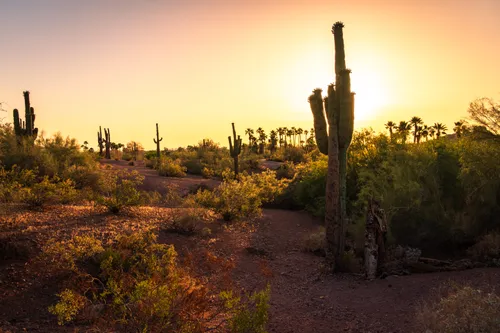
Major Attractions
Beyond its natural landscape, Papago Park houses some significant Phoenix attractions. The Desert Botanical Garden showcases an impressive collection of desert plants from around the world, while the Phoenix Zoo offers a family-friendly wildlife experience.
The Hole-in-the-Rock remains the park's star attraction, offering a relatively easy hike with a big payoff. Come late afternoon and you'll join locals and visitors alike gathering to watch the sunset paint the sky over the Phoenix skyline - it's genuinely worth timing your visit for this.

Recreational Facilities
Golf enthusiasts can tee off at the Papago Golf Course, which represents the home course for Arizona State University's golf team. If fishing is more your style, the park features seven acres of stocked lagoons where you can cast a line while watching local waterfowl go about their day.
Within the park, you'll discover numerous covered picnic areas with tables, excellent for family gatherings or a peaceful lunch break. Clean restrooms are available, although note that some facilities close early in the evening.
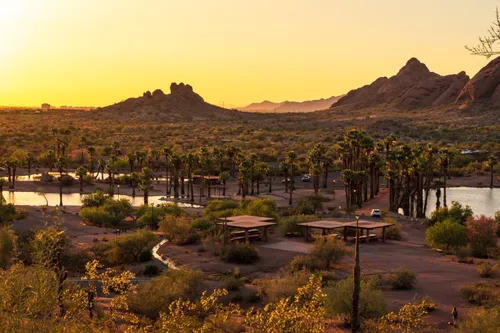
Wildlife and Nature
Despite sitting in the middle of a major metropolis, Papago Park maintains a surprising amount of wildlife. On a typical visit, you might spot rabbits darting between cacti, quail families parading in single file, roadrunners zipping past, or various bird species soaring overhead. The park's ponds create miniature oases, complete with palm trees that seem almost out of place yet perfectly at home.
The landscape showcases classic Sonoran Desert vegetation - various cacti standing sentinel among other drought-adapted plants - giving you a genuine glimpse into Arizona's remarkable native ecosystem.
Papago Park offers a convenient way to experience desert landscape and attractions without having to venture far from Phoenix.
All Features & Facilities
Active Recreation
Nature & Wildlife
Water Features & Activities
Visitor Services
Food & Gathering
Photo Gallery (click to enlarge)


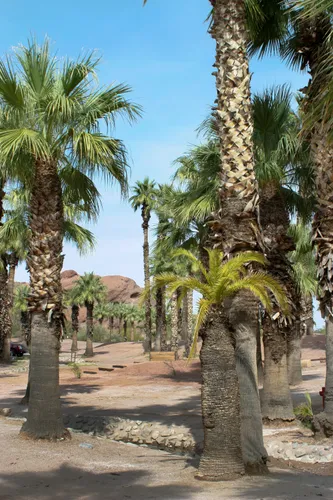
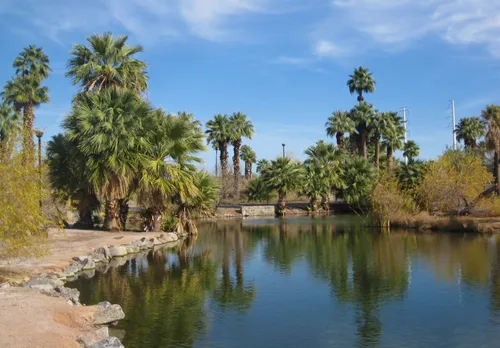

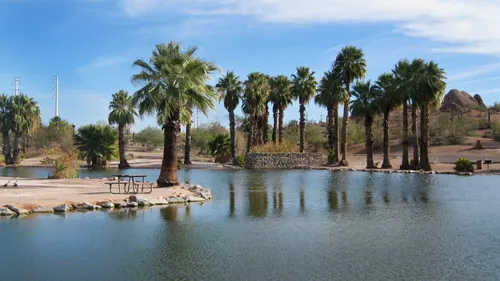
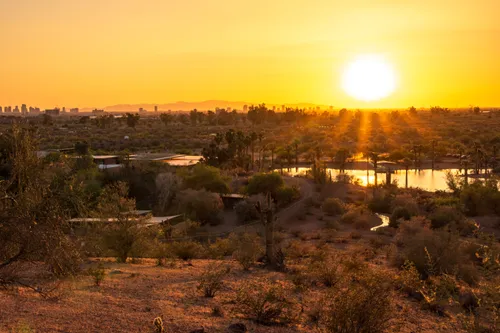
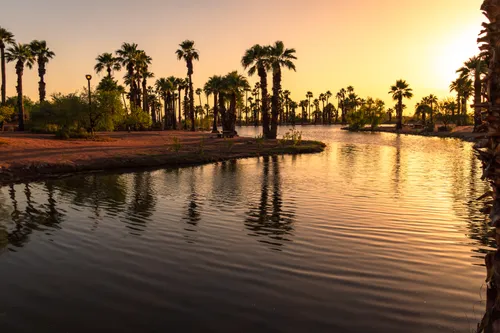


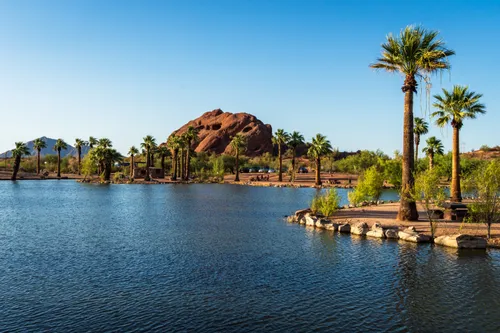

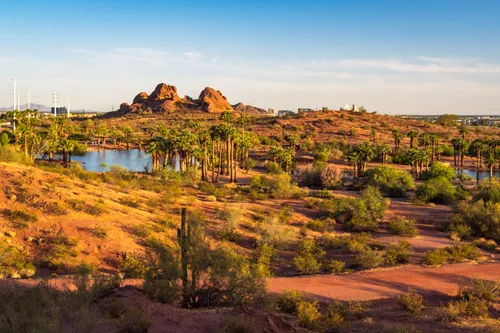
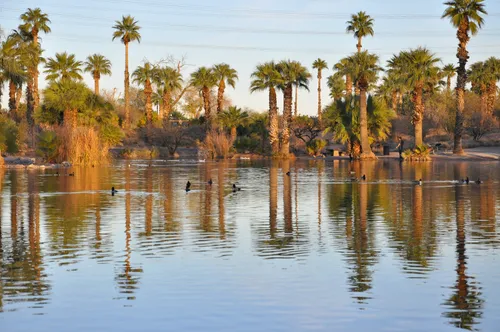
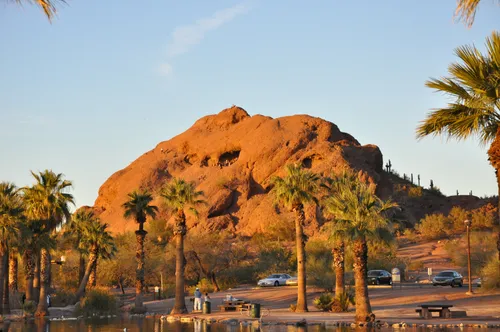

ParkMagnet Score
Top Park
Park Size
Opening Hours
Weather
Top Restaurants Near Papago Park
Gertrude's
In the park1201 N Galvin Pkwy, Phoenix, AZ 85008
Refined New American restaurant featuring sustainable Southwest-inspired cuisine in an elegant, relaxed desert setting.
Gypsy's Roadhouse
0.4 miles5122 E McDowell Rd, Phoenix, AZ 85008
Casual dive bar and grill featuring pool tables, cold beer, and hearty American comfort food.
The Stockyards Steakhouse
0.6 miles5009 E Washington St UNIT 115, Phoenix, AZ 85034
Historic Wild West-themed steakhouse serving premium cuts of beef in atmospheric saloon-style dining rooms.
Kare Ethiopian Restaurant
0.7 miles4729 E McDowell Rd, Phoenix, AZ 85008
Authentic Ethiopian restaurant serving traditional dishes with welcoming service and cultural coffee ceremonies.
Green New American Vegetarian
0.8 miles2240 N Scottsdale Rd #113, Tempe, AZ 85288
Creative vegan restaurant serving plant-based versions of classic American comfort foods in a cheerful atmosphere.
Pizza & Grill
0.8 miles1428 N Scottsdale Rd, Tempe, AZ 85288
Mediterranean-inspired pizzeria serving halal pizza, chicken wings, gyros, and pasta in a friendly atmosphere.
Top Hotels Near Papago Park
Motel 6 Tempe, AZ - Scottsdale South
0.8 miles1612 N Scottsdale Rd, Tempe, AZ 85288
Budget-friendly motel featuring an outdoor pool, free parking, and complimentary morning coffee for guests.
Hampton Inn & Suites Phoenix Tempe
0.9 miles1415 N Scottsdale Rd, Tempe, AZ 85281
Modern hotel featuring complimentary hot breakfast, outdoor pool, and convenient access to Tempe attractions.
Marriott Phoenix Airport
0.9 miles1101 N 44th St, Phoenix, AZ 85008
Airport hotel featuring comfortable rooms, outdoor pool, fitness center, and convenient free shuttle service.
Residence Inn Phoenix Airport
1.0 miles801 N 44th St, Phoenix, AZ 85008
Extended stay hotel offering spacious suites with full kitchens and complimentary breakfast buffet near the airport.
Hampton Inn Phoenix-Airport North
1.0 miles601 N 44th St, Phoenix, AZ 85008
Contemporary airport hotel featuring complimentary shuttle service, breakfast, fitness center, and outdoor pool.
Holiday Inn & Suites Phoenix Airport North by IHG
1.0 miles1515 N 44th St, Phoenix, AZ 85008
Modern all-suite hotel featuring spacious rooms, landscaped outdoor pool, and convenient airport shuttle service.
